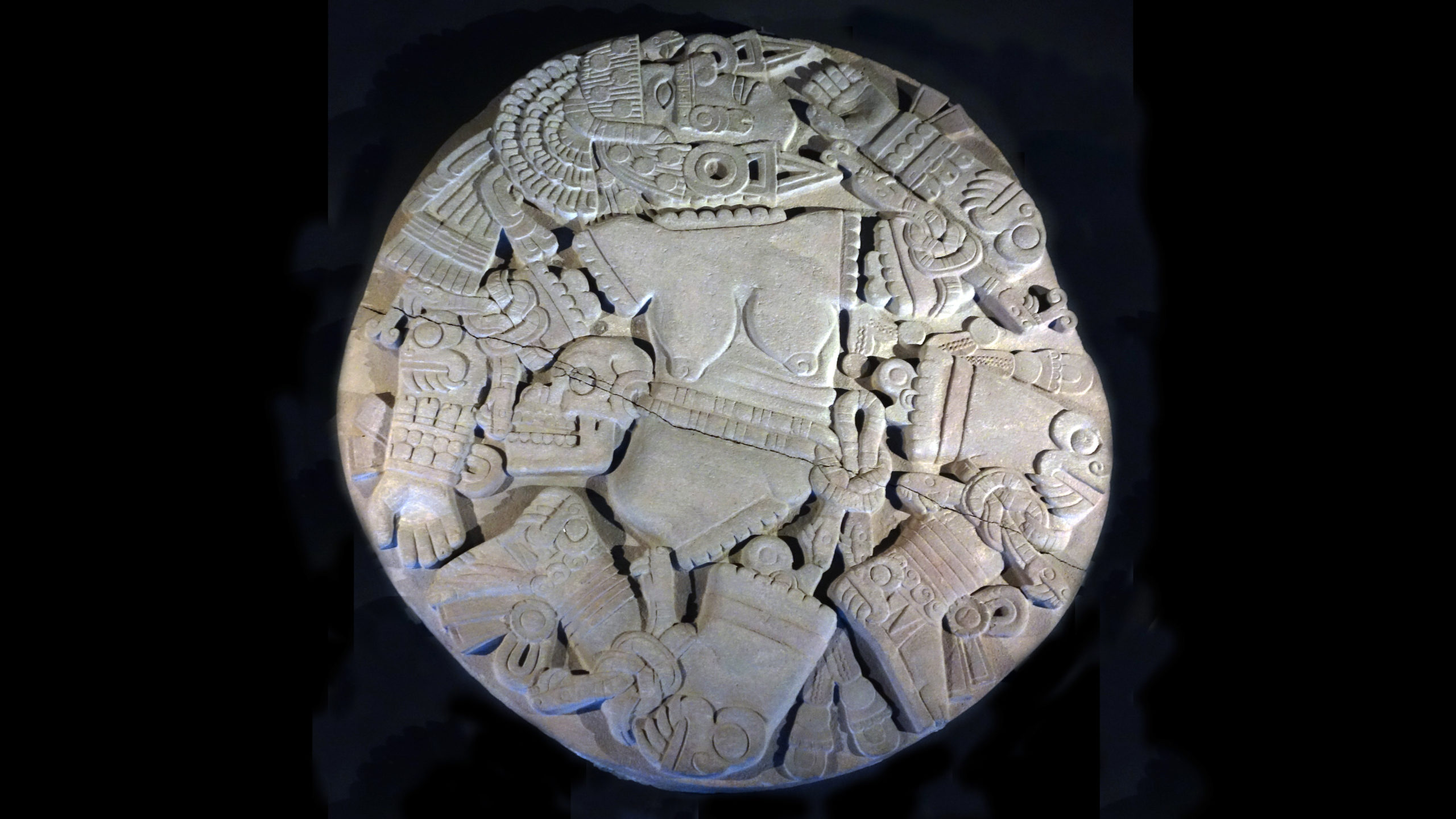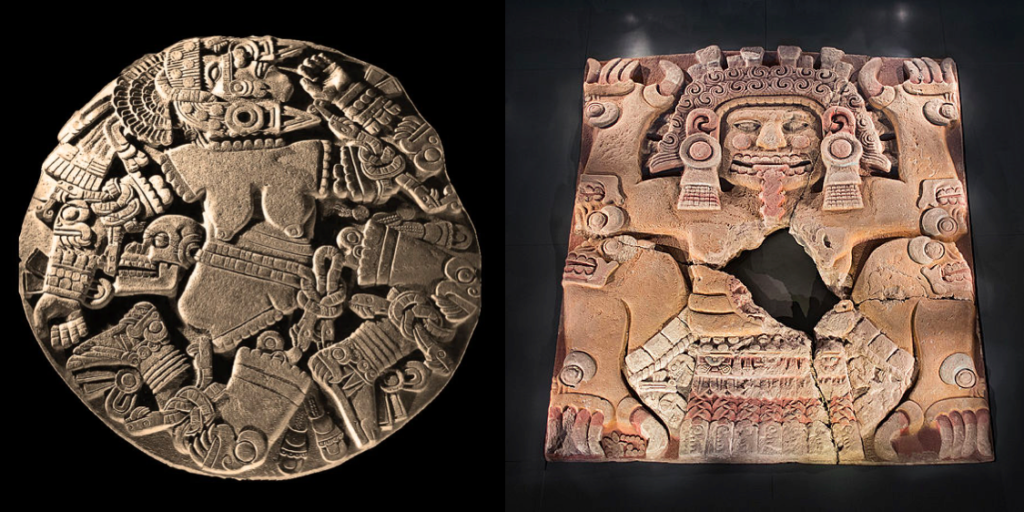The Aztec capital of Tenochtitlan was a sight to behold when the Spanish conquistadors first laid eyes on it in 1519. At the heart of this magnificent city stood the Templo Mayor, a towering structure that reached 150 feet into the sky. Little did the Spaniards know that this imposing temple concealed a wealth of secrets about the Aztec civilization that had flourished for decades before their arrival.
Today, the Templo Mayor lies in ruins, its grandeur reduced to rubble. But thanks to the tireless efforts of archaeologists, we are beginning to uncover the hidden stories that this ancient structure holds. Through excavations that have delved deep into the temple’s multiple layers, researchers have gained unprecedented insights into the religious practices, power structures, and cultural traditions of the Aztec people.
The Templo Mayor: A Monument to Aztec Power

When the Spanish conquistadors arrived in Tenochtitlan, the Templo Mayor stood as an imposing symbol of Aztec power and religious devotion. This massive structure, dedicated to the Aztec gods Huitzilopochtli and Tlaloc, was the centerpiece of the Aztec capital’s sacred precinct, surrounded by numerous other temples, palaces, and ceremonial structures.
But the Templo Mayor that the Spaniards saw was just the latest in a long line of temples that had occupied the same site. Archaeologists have discovered that the structure they demolished to build their own cathedral was actually the sixth iteration of the Templo Mayor, each one constructed on top of the previous version by successive Aztec rulers.
This practice of building new temples over old ones was a common feature of Mesoamerican architecture, as each ruler sought to leave their mark on the sacred landscape and cement their own political and religious legitimacy. By constructing a new temple, an Aztec king was not only honoring the gods but also asserting his right to rule over the empire.
Uncovering the Secrets of the Templo Mayor

Since the early 1980s, archaeologists have been meticulously excavating the buried remains of the Templo Mayor, uncovering a wealth of artifacts and insights into Aztec society. One of the first major discoveries was a massive stone disk depicting the Aztec moon goddess Coyolxauhqui, who was believed to have been dismembered by her brother Huitzilopochtli, the god of war.
This grisly scene, which was reenacted regularly at the temple’s summit, speaks to the carnal nature of Aztec religious practices. Rows of sculpted skulls and the remains of actual human sacrifices found at the site further underscore the Aztecs’ preoccupation with blood and ritual violence.
Scholars suggest that this focus on public displays of sacrifice and domination may have been a way for the Aztec elite to assert their power and control over the populace. By monumentalizing their religious practices and making them visible to all, the rulers of Tenochtitlan could project an image of their own might and the inviolability of their rule.
The Tomb of a Legendary Aztec Ruler

One of the most tantalizing discoveries at the Templo Mayor site is the possible tomb of the legendary Aztec ruler Ahuítzotl, who reigned from 1486 to 1502. According to historical accounts, Ahuítzotl was cremated upon his death, and his ashes were placed in an urn at the base of the Templo Mayor.
In 2006, archaeologists excavated a stone inscribed with the Aztec year “10 Rabbit,” which corresponds to 1502 – the year of Ahuítzotl’s death. Accompanying the stone were artifacts suggesting an elite burial, leading researchers to believe they had finally located the long-lost remains of this famous Aztec ruler.
However, further investigation revealed that the urn containing Ahuítzotl’s ashes had actually been discovered and removed from the site back in 1900 by a Mexican archaeologist named Leopoldo Batres. At the time, the area around the Templo Mayor was sparsely populated and had a reputation for being haunted, likely a remnant of the site’s bloody history.
This discovery highlights the challenges that archaeologists face in piecing together the full story of the Templo Mayor and the Aztec civilization that it represents. But it also underscores the remarkable resilience of these ancient structures, which have managed to preserve their secrets for centuries, even in the face of repeated attempts to erase their legacy.
The Enduring Legacy of the Templo Mayor
The Templo Mayor may lie in ruins today, but its significance continues to resonate with people around the world. This ancient structure stands as a testament to the ingenuity, religious devotion, and political ambition of the Aztec people, who transformed Tenochtitlan into one of the most impressive cities in the Americas.

Through the ongoing excavations and research, we are gaining a deeper understanding of the Aztec worldview and the complex social and political dynamics that shaped their civilization. The grisly rituals and displays of power uncovered at the Templo Mayor site have challenged long-held perceptions of Mesoamerican cultures and forced us to reckon with the darker aspects of human nature.
At the same time, the Templo Mayor also serves as a reminder of the fragility of even the mightiest civilizations. The Aztec empire, which once stretched across vast swaths of central Mexico, was ultimately brought down by the arrival of the Spanish conquistadors. The destruction of the Templo Mayor was a symbolic act of cultural erasure, as the Spaniards sought to replace the Aztec’s religious and political structures with their own.
Yet, despite these efforts, the Templo Mayor has endured, and its legacy continues to captivate and inspire people around the world. As we uncover more of its secrets, we are granted a unique window into a vanished civilization, one that can teach us much about the complexities of human society, the power of belief, and the enduring human desire to leave a lasting mark on the world.
Conclusion

The Templo Mayor of Tenochtitlan stands as a powerful symbol of the Aztec civilization, a testament to their religious devotion, political ambition, and cultural sophistication. Through the ongoing excavations and research, we are gaining unprecedented insights into this remarkable society, uncovering the secrets that lay buried beneath the ruins of this once-towering structure.
As we continue to unravel the mysteries of the Templo Mayor, we are not only preserving the legacy of the Aztec people but also expanding our understanding of the complex and often challenging histories that have shaped the world we inhabit today. By delving into the past, we can gain valuable perspectives on the present and perhaps even glimpse a vision of the future.
Perspective through video
